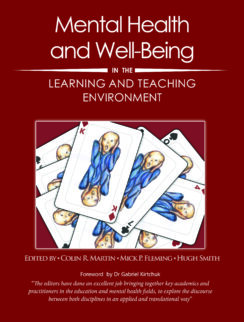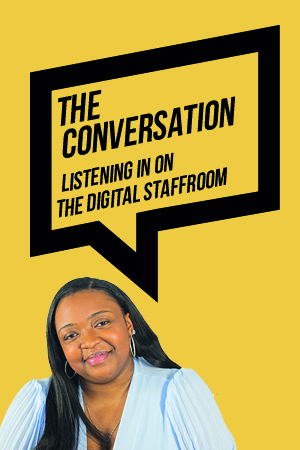While I was initially daunted by the 376 pages on “mental health and well-being in the learning and teaching environment”, I was soon drawn in by the case study on the stress some heads face during Ofsted inspections, stress that can lead them to take their own lives.
The overarching aim of this book is to highlight how much education can learn from mental health professionals – principally in developing holistic views of issues that impact well-being.
This is a fascinating yet rather “weighty” book (in the topics addressed and how heavy the book actually is!) that is packed full of case studies, data, diagrams, supporting evidence and further reading.
You could gain a flavour of each chapter through the helpful “key messages” box at the end of each chapter or you could cherry pick chapters of interest, but those interested or researching this field should be read it from start to finish.
Few will be surprised by the health and safety executive (2012) findings that education and teaching professionals experience higher levels of stress, cognitive stress, burn-out, physical and mental health issues and suicide rates than other occupations.
The book is structured around three key questions:
1. How can we support students and teachers who experience difficulties within the educational setting?
2. How does this affect their learning and wider relationships?
3. What can we do, as colleagues and educators, to help?
I learnt a number of key aspects, including four attachment styles and how they manifest within a learning environment.
For example, students with “insecure, disorganised” attachment styles exhibit behaviours often misrepresented as confidence, rather than a manifestation of vulnerability; these can represent up to a third of students within an average class.
This surprised me and made me consider my own students through a different paradigm. I thought about my most disruptive students and wondered whether they were part of this group, and reflected on whether I (or any other teacher) was really supporting their learning.
It was enormously useful to read the 12-page overview of common disorders in schoolchildren in the UK
It was enormously useful to read the 12-page overview covering the key features of common disorders in schoolchildren in the UK: what educators should look out for, what to try within the classroom and specialist intervention.
This was a practical way to help me trial different strategies for students who struggle with their learning. It also provided me with a good starting point for respective discussions with the head of year, special educational needs coordinator and designated safeguarding lead. I am still keen to identify who these students might be and, more importantly, what can be done to support their learning across the whole school.
There is nothing like this book on the market. It does not patronise the reader; nor does it pretend to hold all the solutions for mental health issues that educational institutions have to deal with. But it recognises and values the roles and contributions that educators make to the lives of their students.
It is upon this foundation that it helps to provide insights, strategies and policies to support mental health in a holistic way.
This is what makes it a book that every educator must read. I hope many have the tenacity to do so.












Your thoughts